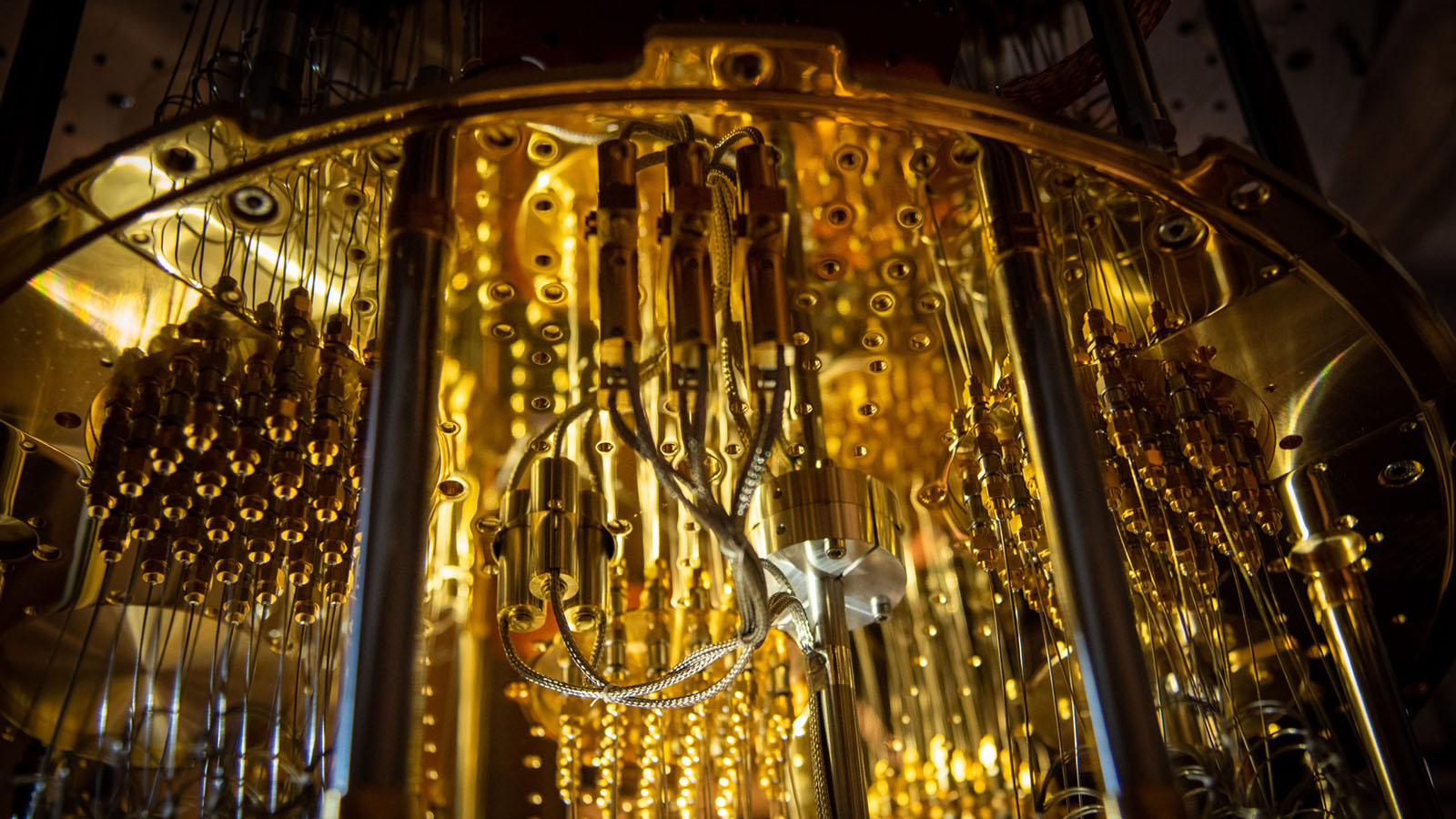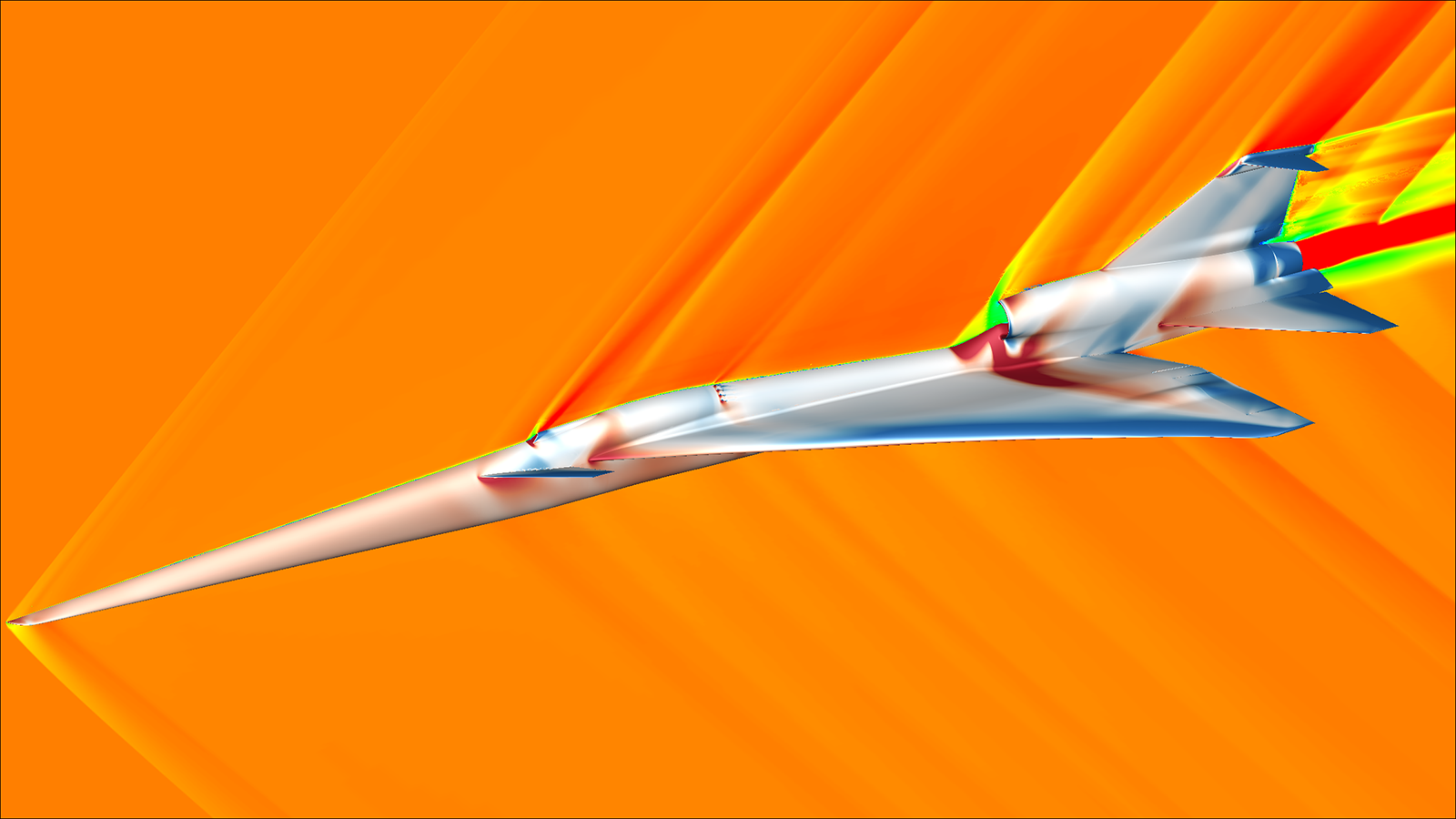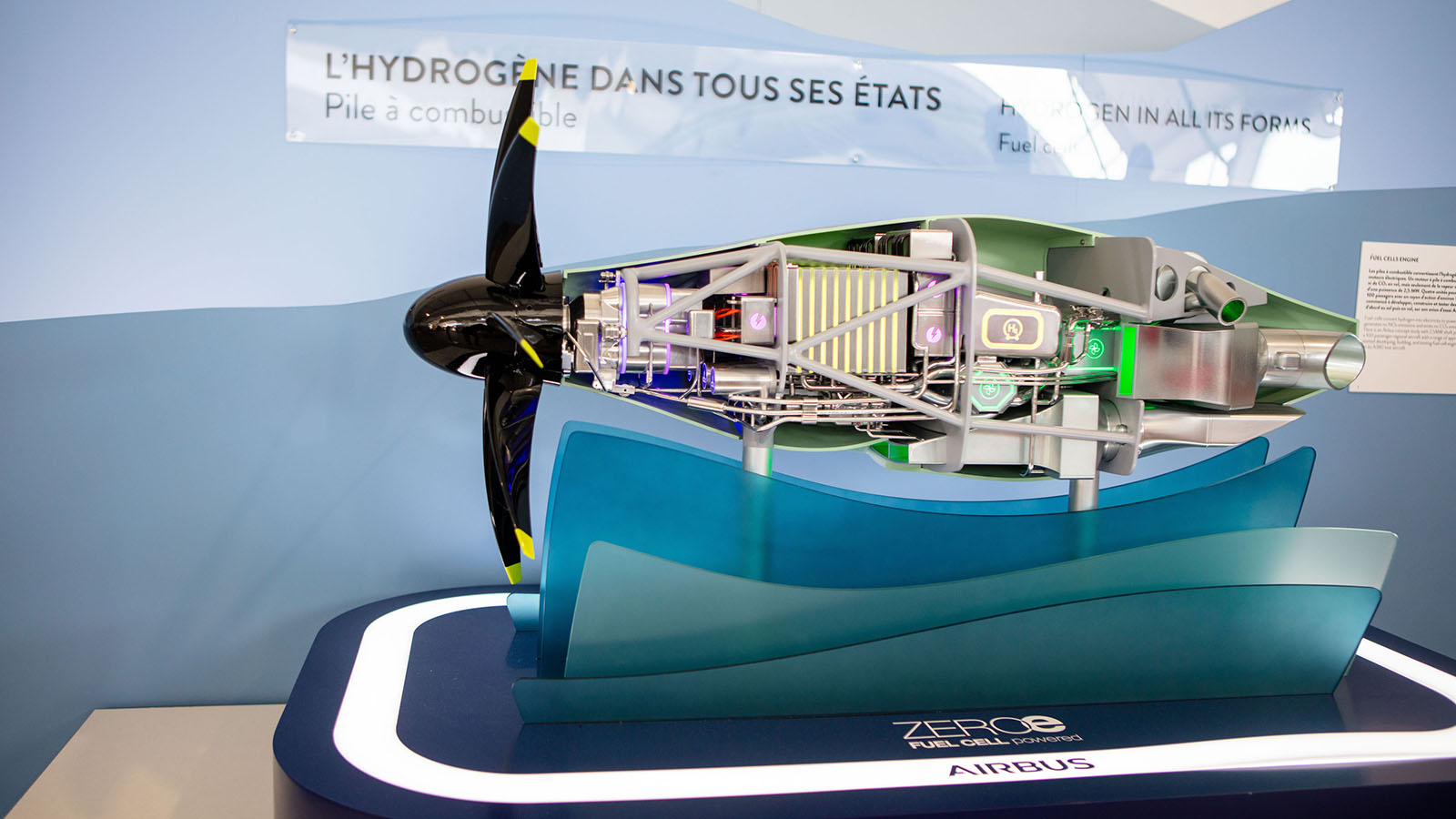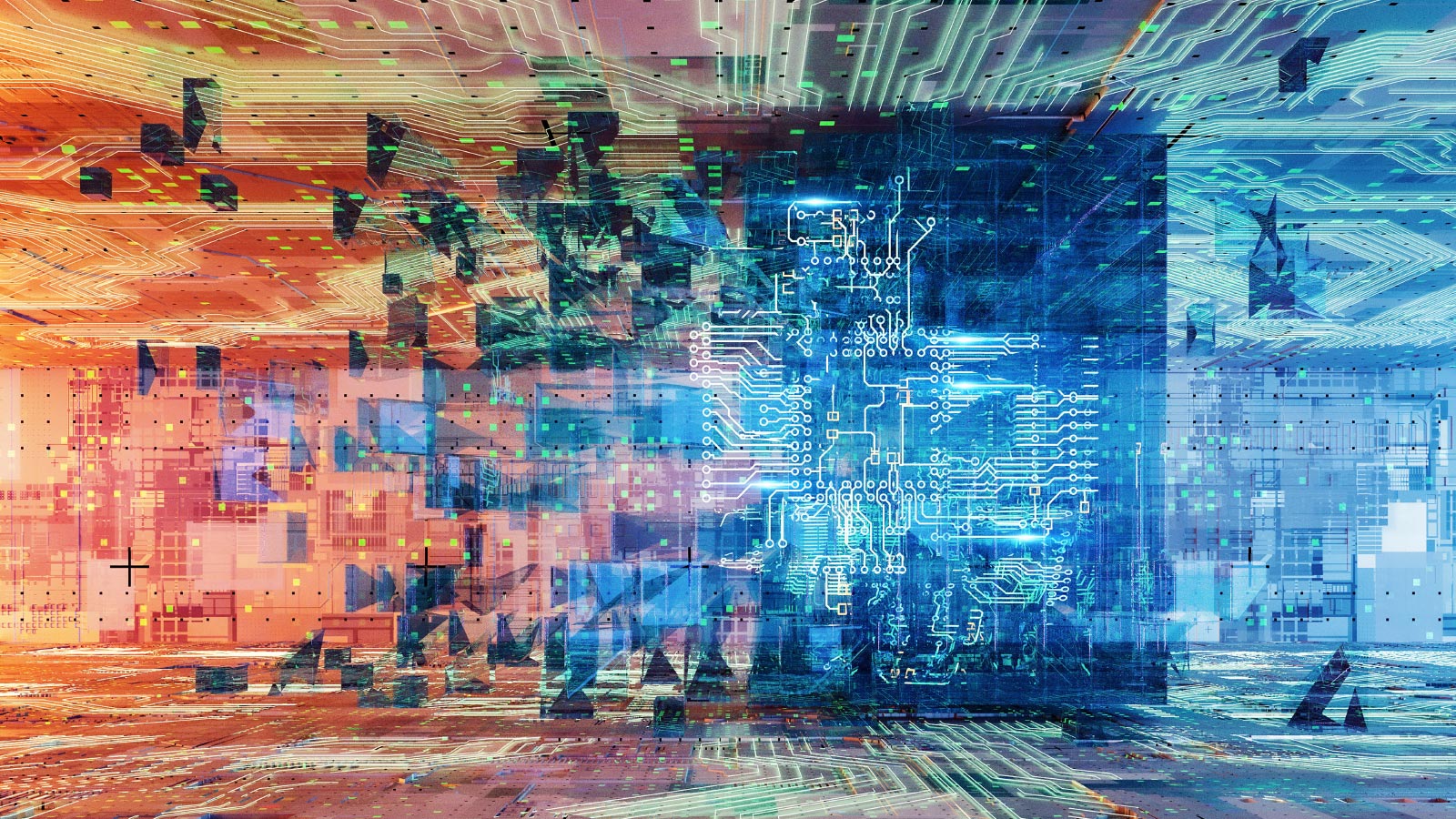Stay Up to Date
Submit your email address to receive the latest industry and Aerospace America news.
How close are researchers to building quantum computers that are practical outside the lab and can reliably perform their promised calculation miracles? Jon Kelvey looks at the state of the technology and potential applications that have engineers and scientists excited.
The United States will pour at least $968 million in fiscal 2024 into research on quantum computing and its applications, more than double the $449 million spent in 2019. The allure is easy to see, as large-scale, error-free quantum computers could in theory perform tasks impossible for existing computers.
If or when they’re ready, these computers won’t be like the “classical” computer on your desktop or in your hand. Those contain circuits etched into silicon chips, and within those circuits are billions of transistors that can be instructed by code to switch either on or off. If someone dared, they could print out pages and pages of 1s and 0s representing each on and off position that make up an entire movie or novel or virtually anything.
Processing is where matters get most interesting: When we watch a movie or design an aircraft on a computer, software directs transistors to switch on and off rapidly. The quest to do such tasks ever faster typically requires a larger processor, linking multiple synchronized processors, packing more transistors onto each chip or doing all three. At some point, etching more transistors into a silicon chip will become impossible — the theoretical size limit for a transistor being something approaching 0.2 nanometers, the diameter of a single silicon atom. Most computer processor transistors today are about 7 nanometers across, though experimental designs have reached 2 nanometers.
Enter the quantum world. All around us are mysterious entities smaller than the atom, including electrons and photons. Experiments in the 1910s showed that quantum-scale matter possesses seemingly impossible properties. Every discrete quantum entity is simultaneously a particle and a wave, a realization that prompted English physicist Arthur Eddington to popularize the term “wavicle” in his 1948 book, “The Nature of the Physical World.” Among the strange aspects of a wavicle is that, to the degree it is a particle, that particle can exist in multiple potential locations simultaneously with multiple properties. Quantum researchers coined the term superposition for this phenomenon.

“When an electron is in superposition, its different states can be thought of as separate outcomes, each with a particular probability of being observed. An electron might be said to be in a superposition of two different velocities or in two places at once,” Caltech’s Science Exchange website explains. Also, two quantum entities — for instance, protons or electrons — can become “entangled” or connected even over vast distances, meaning that if one entity is observed to be spinning in one direction, the spin of the other is correlated and predictable though not necessarily the same, the site explains.
It’s superposition and entanglement that must be harnessed for computation in a quantum computer. “In some weird, strange, counterintuitive way that nobody understands, including me,” the bit — now called a quantum bit or qubit — “is, in some sense, 0 and 1 at the same time,” explains Seth Lloyd, a professor of mechanical engineering and physics at MIT.
Superposition, entanglement and other strange quantum properties made Lloyd and other computing visionaries perk up in the 1990s: If quantum entities could be manipulated to act like computer bits, becoming qubits, the resulting computing power would grow exponentially with the number of entangled qubits. For instance, if you have 300 qubits, and each can represent two states, then to find out how many different states could be represented in a theoretical quantum computer, you would multiply two by itself 300 times. That means “you could perform two to the 300 different computations simultaneously,” Lloyd says.
How many is that? “Two to the 300 happens to be equal to the number of elementary particles in the universe,” he says.
The quintessential theoretical application of this quantum computing power is Shor’s Algorithm, published by MIT mathematician Peter Shor in 1994. Shor showed that a quantum computer armed with his algorithm could factor large numbers so quickly that it could, among other things, decode in a matter of hours the Rivest–Shamir–Adleman encryption that protects bank transactions. It would take the best classical computers trillions of years to break the strongest such RSA encryption.
The first functioning quantum computer was built at MIT in 1998 and manipulated chloroform atoms with a magnetic field to create two qubits. Newer, competing designs create qubits in other ways: Electrons can be moved about in superconducting circuits; photons or clouds of atoms can be supercooled by lasers.
Quantum computers are slowly shedding their reputation as purely laboratory creatures. IBM offers free access over the internet to its experimental 399-qubit Quantum System 2 quantum computer, though there is no simple graphical user interface, and one must write code to run on it. Also, in December, IBM announced the creation of an experimental 1,121-qubit processor. Both of these computers are of the superconducting variety.
But despite the progress and innovation, no quantum computers today reliably achieve the calculations of which they are theoretically capable, and none are ready to enter the wider marketplace. One of the big technical challenges has been figuring out how to get information into and out of a bunch of electrons or atoms or photons that are in a superposition and/or entangled without directly measuring them and unintentionally collapsing the entanglement and superposition. Also, the devices are devilishly difficult to build, often requiring chilling atoms to near absolute zero to keep qubits stable, allow superconductivity and generally isolate the sensitive quantum processor from the surrounding environment. And due to the bizarre properties of the quantum world, they produce errors that must be corrected.
The road map on IBM’s website projects that “a fully error-corrected” quantum computer could be ready in 2029.

“Everything is very sensitive and noisy at these microscopic scales,” Lloyd says. “You have to be able to implement quantum error correction to do what’s called fault tolerant quantum computing.”
Those corrections require reserving redundant qubits for error detection rather than calculation, Lloyd adds. New kinds of software must be created to direct them, given that quantum computers work so differently than classical computers that scientists are still learning how to program them.
“Let’s not underestimate how hard this is going to be,” Lloyd says. “When’s my estimated date for when we actually have commercially viable quantum computers? I say 10 years, plus or minus never.”
And if they do come, you won’t carry one around in your hand or have one in your home office. A small number of powerful quantum computers will be operated at protected locations, isolated from the surrounding environment. Your modernized classical computer will connect with it, make a query and show you the answer over the internet.
For now, the money keeps flowing for quantum computing research, and if practical quantum computers do arrive, here are some of the possible aerospace applications:
1) Computing wing turbulence
When air passes over a smooth surface, like the leading edge of a wing, it moves in a laminar flow, straight and smooth, which minimizes drag. But as the air moves farther from the leading edge, or it encounters changes in shape along the fuselage, swirls and eddies emerge chaotically. Turbulent airflows tend to break away, creating changes in pressure that can increase drag — although there can also be desired effects, like pulling more heat from an aircraft’s surface.
Turbulence of this sort is one of the great unsolved problems in physics, and possibly the biggest problem in aircraft design, according to Dennis Bushnell, a former chief scientist at NASA’s Langley Research Center in Virginia who retired last year. In 2022, while still at NASA, Bushnell published a paper on the potential applications of quantum computing for aerospace problems. Since it’s difficult for even the best existing supercomputers to accurately model turbulence, designers must rely on expensive rounds of wind tunnel tests on models made of various materials. This hems in creativity, especially in commercial aviation.
“In general, we build what we can compute. The inability to numerically measure or compute turbulence at flight conditions correctly has contributed to transport aircraft being largely derivatives of 707s since the late 50s,” Bushnell says by email, which contributes to an innate conservatism in commercial aircraft design.
Practical and affordable exploration of more radical aircraft designs would require modeling turbulence with software simulations. That in turn means solving the notoriously difficult Navier-Stokes equation, which is actually a collection of interrelated equations that together describe the velocity, pressure and density of fluids in motion. To date, all Navier-Stokes solutions when applied to aircraft are approximate.

“We know nothing about this equation, yet it is the backbone of every computational fluid dynamics problem,” says Mukund Vengalattore, a quantum physicist and DARPA program manager focused on quantum technology research. “That is the situation we are in.”
The Clay Mathematics Institute currently offers a $1 million prize to anyone who demonstrates a solution to Navier-Stokes in three dimensions.
Quantum computers may be able to crack Navier-Stokes, allowing for realistic simulations on computers that obviate at least some testing of structural materials. The vision, as Vengalattore describes it, would be computer simulations that can tell designers exactly how a shockwave will modify around a wingtip so that engineers understand the material constraints of an aircraft design long before they build anything physical. That could allow engineers to finally break free of small iterations on existing designs and explore radical concepts too costly to consider otherwise.
“That’s kind of the Holy Grail,” says Jasper Krauser, central coordinator for quantum technologies at Airbus, “if you want to design a very efficient aircraft.”
2) Modeling fuel cell chemistry
Last year, Airbus, BMW and quantum computer manufacturer Quantinuum of the United Kingdom applied quantum computing for the first time to model fuel cell reactions.
“You might not think solving chemistry problems is the heart of aerospace — we’re not a drug company — but when we’re talking about, for example, hydrogen-powered aviation, we need fuel cells,” Jasper Krauser of Airbus says. Fuel cells are very difficult to model in software using classical computers, he says, and you cannot physically test every material and geometry. Quantum computing simulations could “enable hydrogen-powered aviation with completely different capabilities, which are not possible today.”
Alas, Krauser says the simulation did not model fuel cell chemistry any better than non-quantum supercomputers, but the attempt gave Airbus researchers new insights into fuel cell chemistry and an idea of how to use quantum computers for chemistry simulations when they become available.
“You cannot test every material, every geometry,” Krauser says. “So if you have a modeling technique, you might be able to realize, in the end, more efficient fuel cells.”
3) Creating quantum wind tunnels
Mukund Vengalattore’s newest effort at DARPA will involve creating what he calls a “quantum wind tunnel.” In June, DARPA issued one of its Disruption Opportunities, inviting U.S. companies and academic researchers to compete to design the tunnel under this Automated Prediction Aided by Quantized Simulators, or APAQuS, effort. The idea is to tap quantum properties to mimic the turbulence around an aircraft in “something that can fit on a tabletop and can be studied by a couple of graduate students or postdocs,” he says.

Inside, a “quantum fluid” would be created, such as by cooling a cloud of rubidium atoms to near absolute zero. Some of the resulting fluid would replicate the air in a wind tunnel, and some would be manipulated to create the equivalent of a wind tunnel model.
“Just by shining patterns of light on the quantum fluid, you can essentially mimic or simulate different geometries, and the [remaining] quantum fluid is now going to flow around those,” complete with turbulence, Vengalattore says.
Measurements could then be made under a wider range of conditions than is possible in any physical wind tunnel, and those measurements would be easier than in a wind tunnel because the turbulence unfolds more slowly. “You’re going from picosecond or femtosecond dynamics in the real world,” he says, “to millisecond or longer dynamics in the simulator.”
The resulting measurements will be fed into a classical computer running an artificial intelligence algorithm designed to find patterns in the extremely small-scale turbulence in the quantum fluid that also apply to large-scale turbulence in airflows. Researchers could then “extract the broader principles that govern turbulence,” Vengalattore says.
Solutions to the Navier-Stokes equation [See No. 1 on page 38] could then be extracted, although Vengalatorre has something even more ambitious in mind: “While the Navier-Stokes equation is the backbone of all computational fluid dynamics today, there’s still some very serious and very legitimate questions about whether or not the Navier-Stokes equation is the right description of turbulence.”
He hopes APAQuS will uncover whether there are new equations that would describe aerodynamics even more accurately than Navier-Stokes, perhaps unlocking previously unimaginable designs.
4) Optimizing flight paths and more
Aerospace is replete with problems of optimization: How do you coordinate multiple aircraft to take as many passengers to a dozen different cities with the least number of flights, or in the least amount of time? How do you make flight plans that minimize fuel burn? In an airline industry with thin profit margins, Mukund Vengalattore of DARPA says, even fractional improvements on these types of problems can save a lot of money. “If you can find even a 5% improvement in a new routing protocol or strategy and that gives you a 5% savings in fuel costs,” he says, “that’s actually a big deal.”
The problem, Jasper Krauser of Airbus says, is that “the complexity of optimization problems is super nasty.” Take flight path management as an example: You can optimize a single flight path for fuel efficiency or time, but adding just one additional aircraft to the problem doubles the number of possible solutions, because the computational complexity of optimization problems grows exponentially with the number of elements you are trying to optimize. Therefore, “we need exponentially more [computing] power again to solve them,” Krauser says.
Quantum sensing could come first
Quantum properties are being employed in experimental sensors that promise to be more accurate and stable than today’s accelerometers, gravitometers or light detectors. Like quantum computers, these sensors use qubits. But unlike quantum computers, which need to be carefully isolated from the outside environment, quantum sensors can make use of the sensitivity of qubits to detect minuscule changes, such as fluctuations in magnetic fields or the strength of gravity, or even the passage of time as measured by quantum clocks.
“This is why quantum sensors are, I would say, significantly more mature [than quantum computers] at the moment,” says Jasper Krauser, central coordinator for quantum technologies at Airbus.
Airbus is currently working with the European Commission on the Cold Atom Rubidium Interferometer in Orbit for Quantum Accelerometry, or CARIOQA, project. The goal is to build a quantum accelerometer that can map variations in Earth’s gravity field in greater detail than existing instruments. The instrument would be incorporated into a satellite for a test flight targeted for 2030. Inside the instrument, lasers would position individual atoms in a chip and measure how fast they fall to calculate the strength of gravity pulling on those atoms in orbit. Airbus will build the satellite for the test flight and is also in charge of developing the core chip and vacuum system for the accelerometer.
Quantum sensors are not only more sensitive than traditional instruments, their reliance on quantum states means they don’t drift out of calibration due to changes in their surrounding environment, such as temperature changes, according to Krauser. “That’s very interesting for aerospace because we are operating our products with many, many sensors,” he says. “There are hundreds or thousands of sensors in an aircraft. In different environmental conditions, if you have drifts of your sensor systems, then of course you need to recalibrate.”
And quantum sensors have already made a difference in space science and astronomy. When trying to resolve point sources of light such as a binary star system with an optical telescope, it’s impossible to resolve both stars if they are too close together.
“You don’t get a point on the screen, just a kind of blob,” says quantum researcher Seth Lloyd, a professor of mechanical engineering and physics at MIT. The minimal distance between two stars where you can still resolve both points of light is the diffraction limit.
With a detector sensitive to the quantum scale properties of photons, Lloyd says, “you can actually go beyond the classical diffraction limit for imaging for telescopes and microscopes” and resolve both stars or other point light sources, as Lloyd’s former student Mankei Tsang, now an associate professor studying quantum measurement at the National University of Singapore, demonstrated in a paper published in 2016.
While not always thought of as quantum sensors, the best atomic clocks now work at the quantum scale, and their precise measurement of time can allow for the construction of large synthetic aperture optical telescopes, in which each individual mirror must synchronize precisely with the others. Quantum sensors or similar techniques are also being used to improve the sensitivity of the Laser Interferometer Gravitational-Wave Observatory to gravitational waves.
Such applications are “less flashy and in the public eye right now” than quantum computers, says Lloyd, but they’re already on the verge of making a difference for Earth and space science. — Jon Kelvey
That’s where quantum computers could make a difference. Because (theoretically at least) the computing power of quantum computers grows exponentially with the number of entangled qubits in the quantum processors, “the quantum computational power needed to solve such a complex problem increases less than the problem size itself,” Krauser says.
DARPA has been testing that hypothesis since 2020 with its Optimization with Noisy Intermediate-Scale Quantum devices, or ONISQ program, which Vengalatorre manages. The goal is to identify quantum computer solutions to a variety of optimization problems, from optimizing internet network security against hacks to optimizing how aircraft control surfaces and sensors coordinate in flight.
“Sometimes the controls can talk to each other or interfere with each other,” Vengalattore says. “How do you optimize or prioritize which one is more important?”
Researchers are making progress under ONISQ, Vengalattore says, but so far they are short of finding 100% solutions for optimization problems. It’s been difficult for ONISQ researchers to clearly benchmark this progress against classical computers that also return partially efficient solutions to those same problems.
“Here we are coming in with very rigorous bounds and performance bounds and performance guarantees,” he says, while trying to compete with classical computing solutions that are themselves “ extremely fuzzy.”
As Airbus looks at it, 100% solutions for optimization problems would be incredible, but even marginal improvements over existing solutions can make a big difference at scale, according to Krauser.
“Say you have a fleet of satellites in orbit and want to do optical imagery — that’s something we have as a product,” he says. When a customer orders images of Earth, Airbus has to decide which satellite takes which image and when. “Maybe you can have the same result with one satellite less,” Krauser says.
Airbus’ constellation includes Pléiades, Pléiades Neo and the remaining SPOT satellites.
Working on optimization problems has also yielded a more general advance in quantum computing for DARPA. In December 2022, a team of researchers from Harvard University, MIT, Caltech, Princeton University and quantum computer manufacturer QuEra Computing, working under the ONISQ program, demonstrated an early form of error correction to account for the random noise generated by most quantum computers.
“Fault tolerance is something we take for granted in digital, in classical conventional computing,” Vengalattore says, but it was a surprise that ONISQ could demonstrate fault tolerance in quantum computers, even at a rudimentary scale. “This is a rapidly changing landscape, so that’s important to keep in mind.”
About jon kelvey
Jon previously covered space for The Independent in the U.K. His work has appeared in Air and Space Smithsonian, Slate and the Washington Post. He is based in Maryland.
Related Posts
Stay Up to Date
Submit your email address to receive the latest industry and Aerospace America news.




